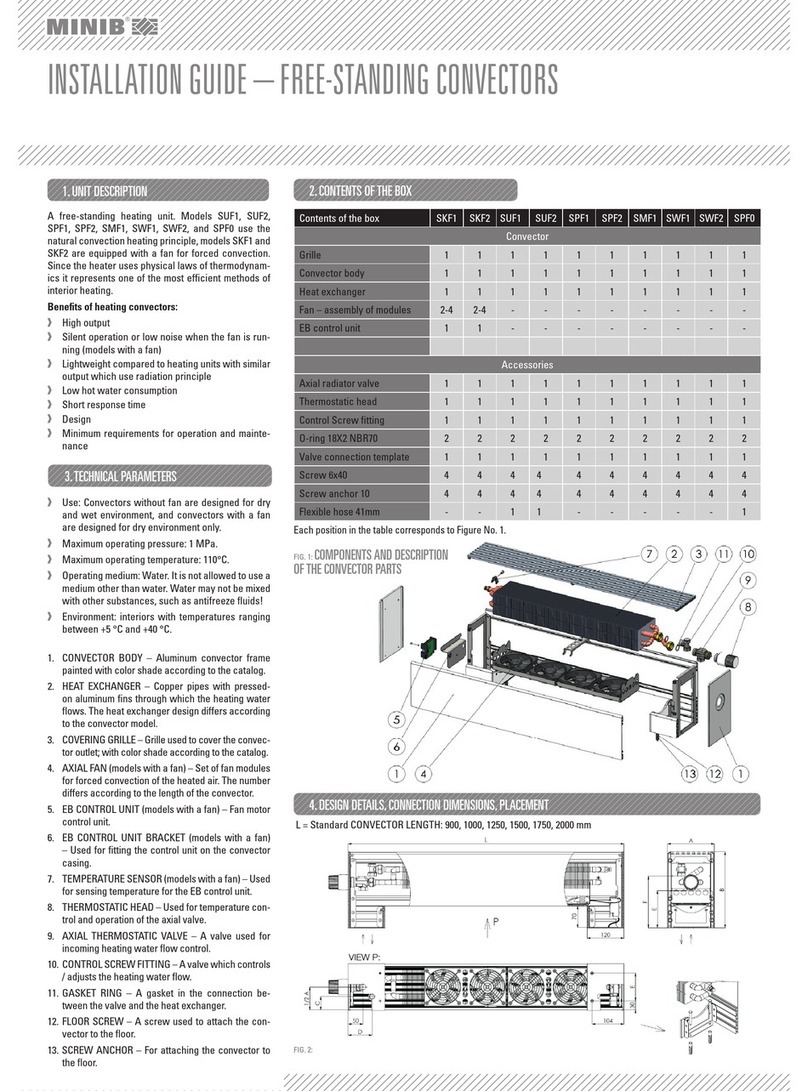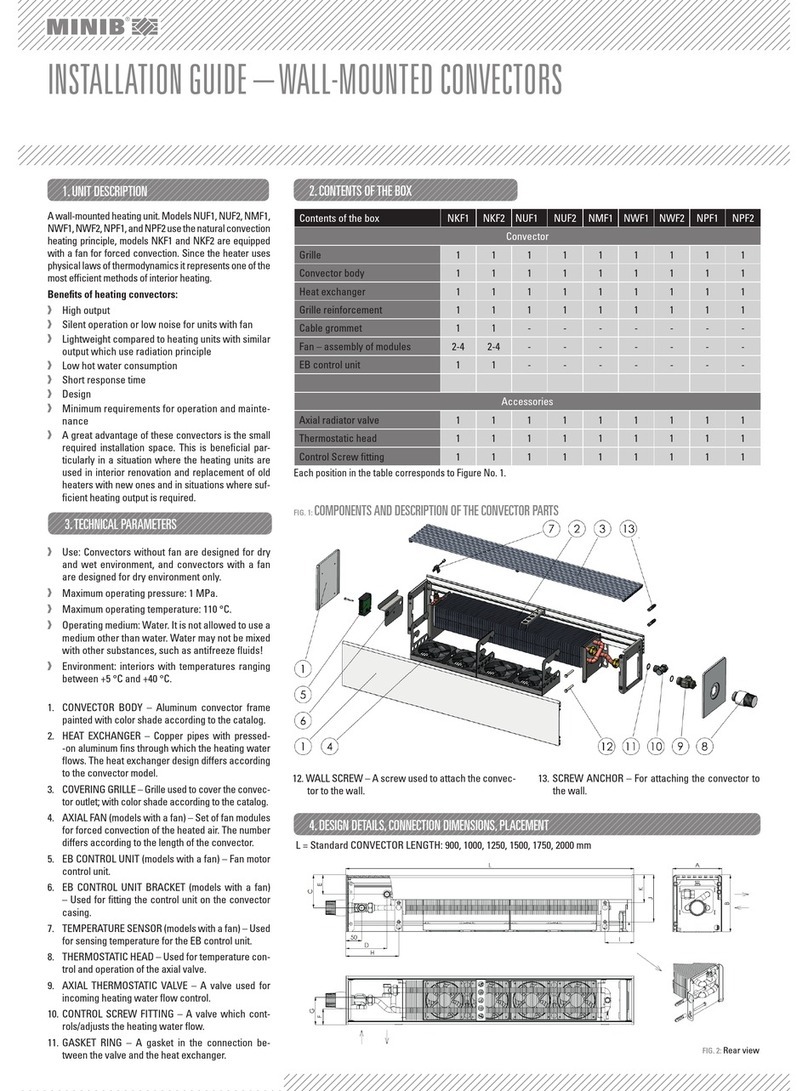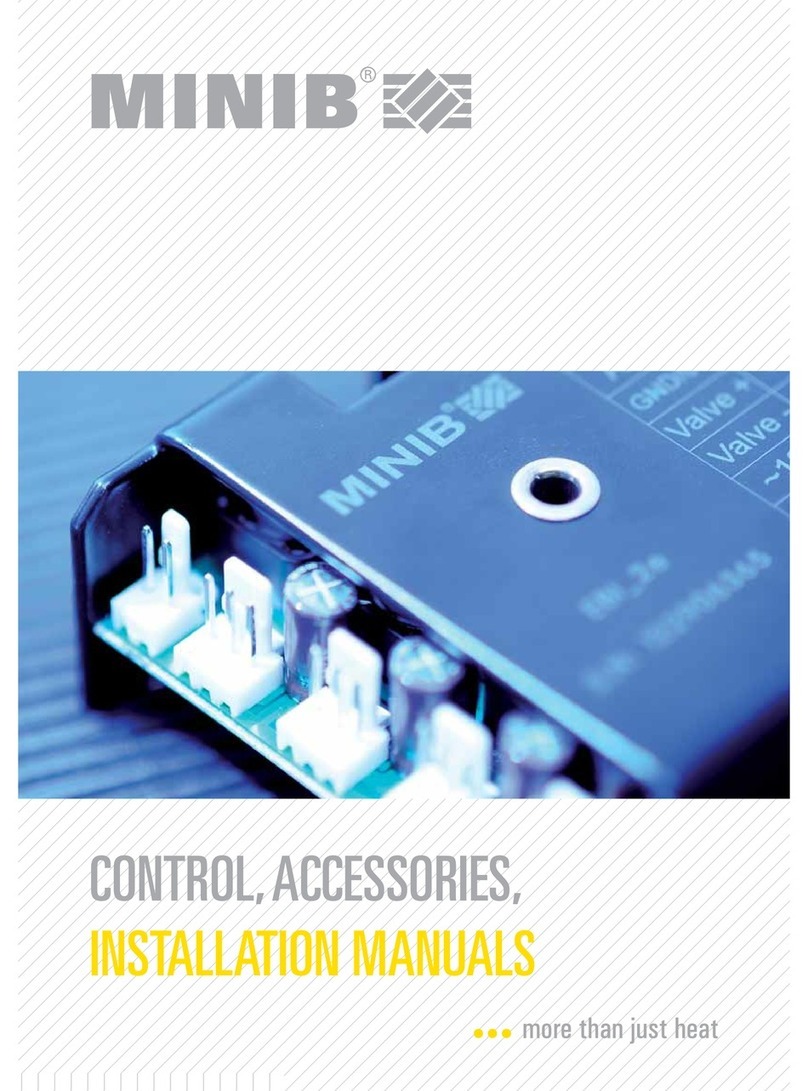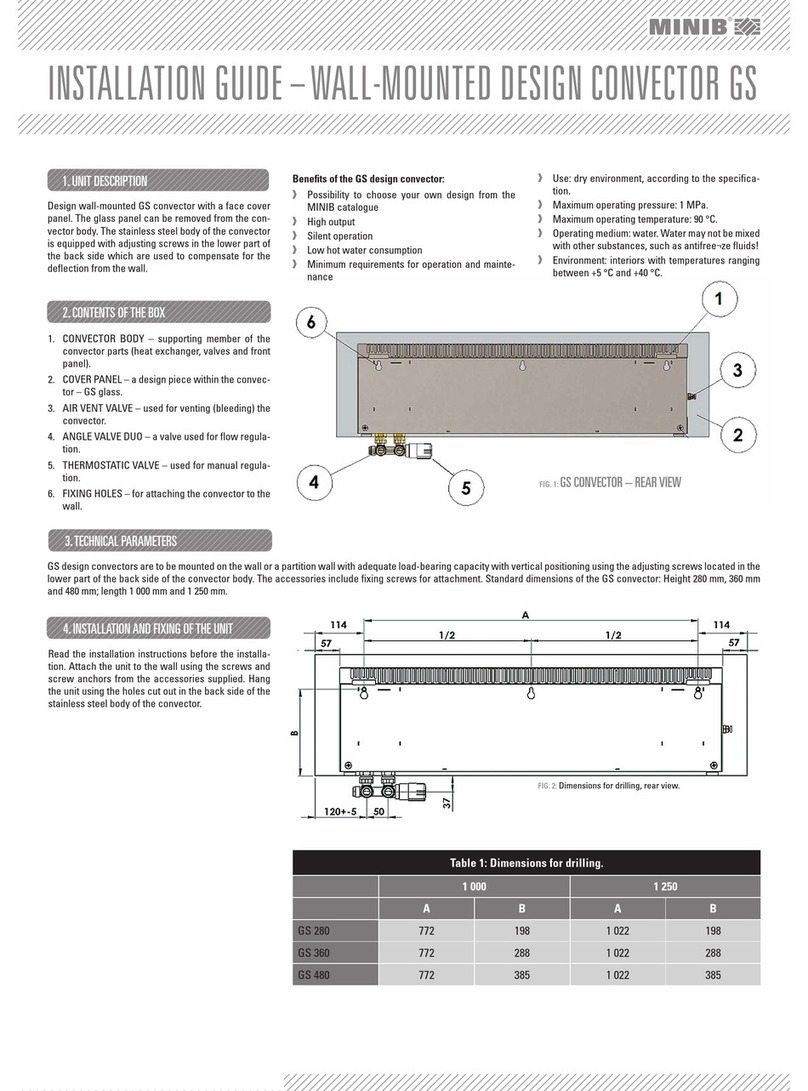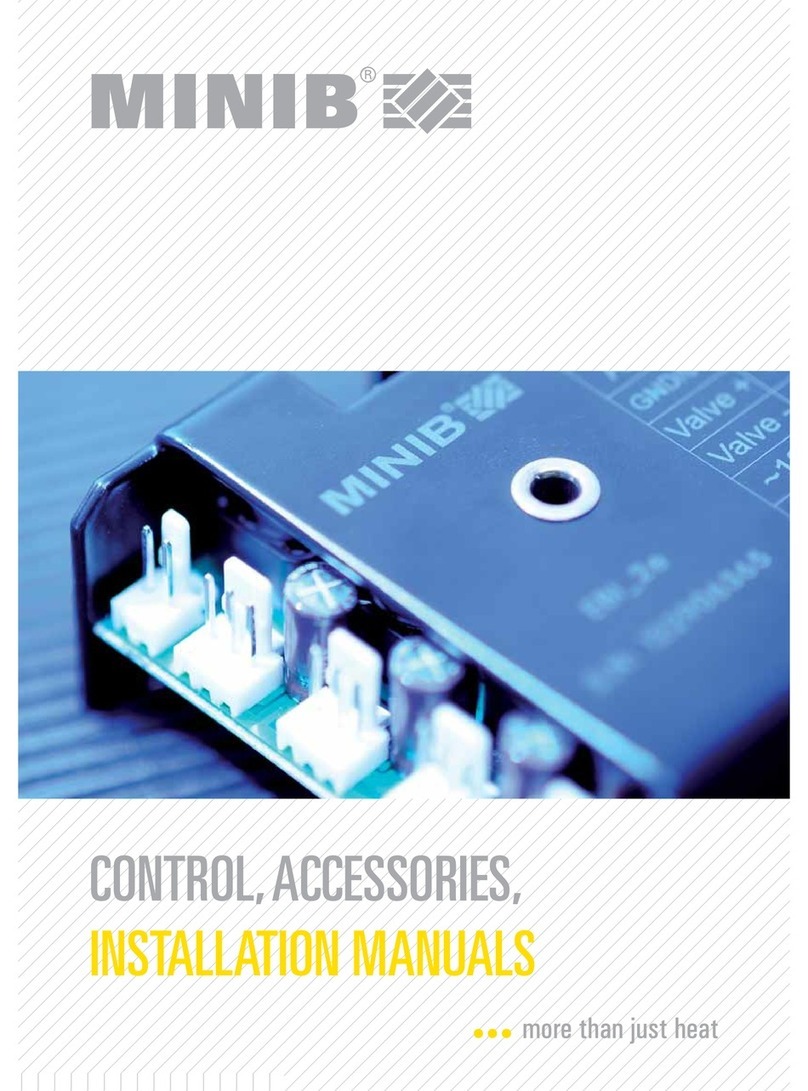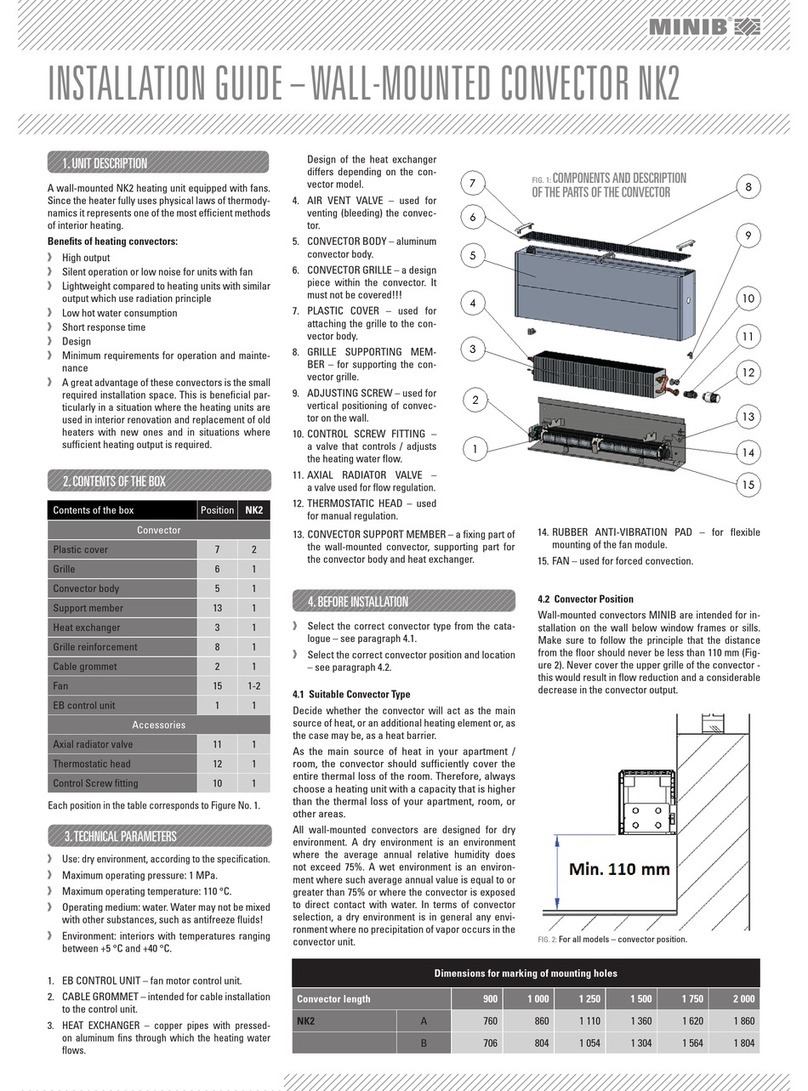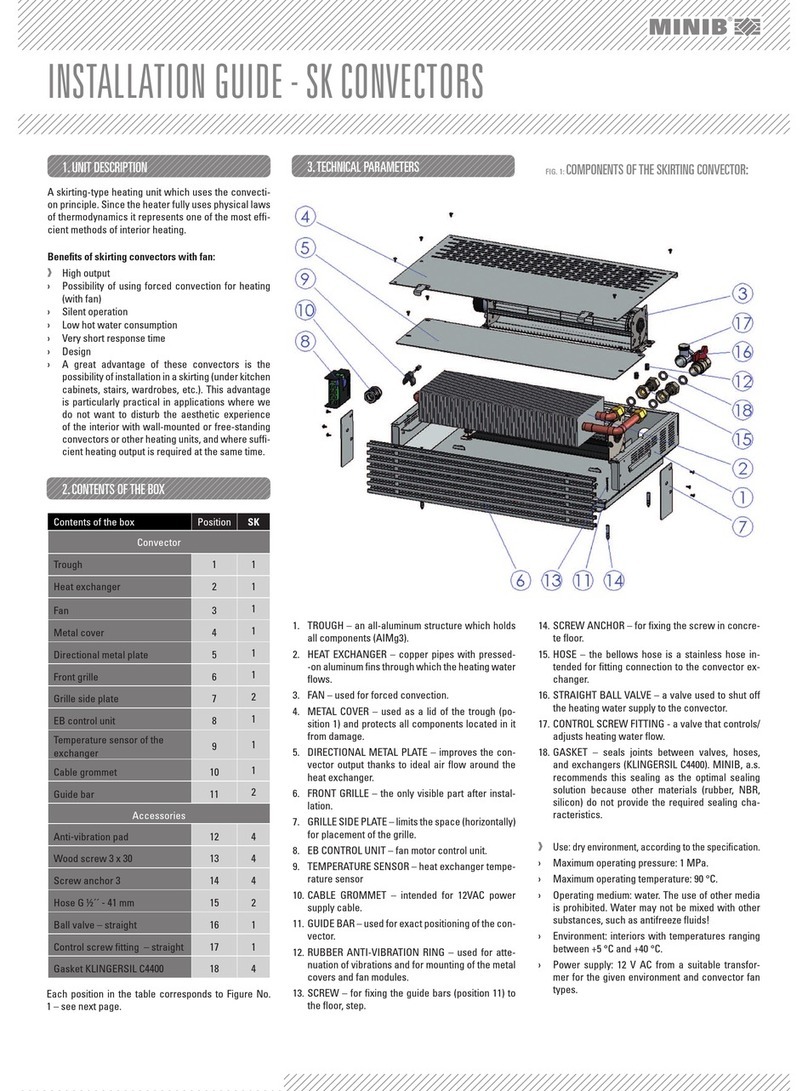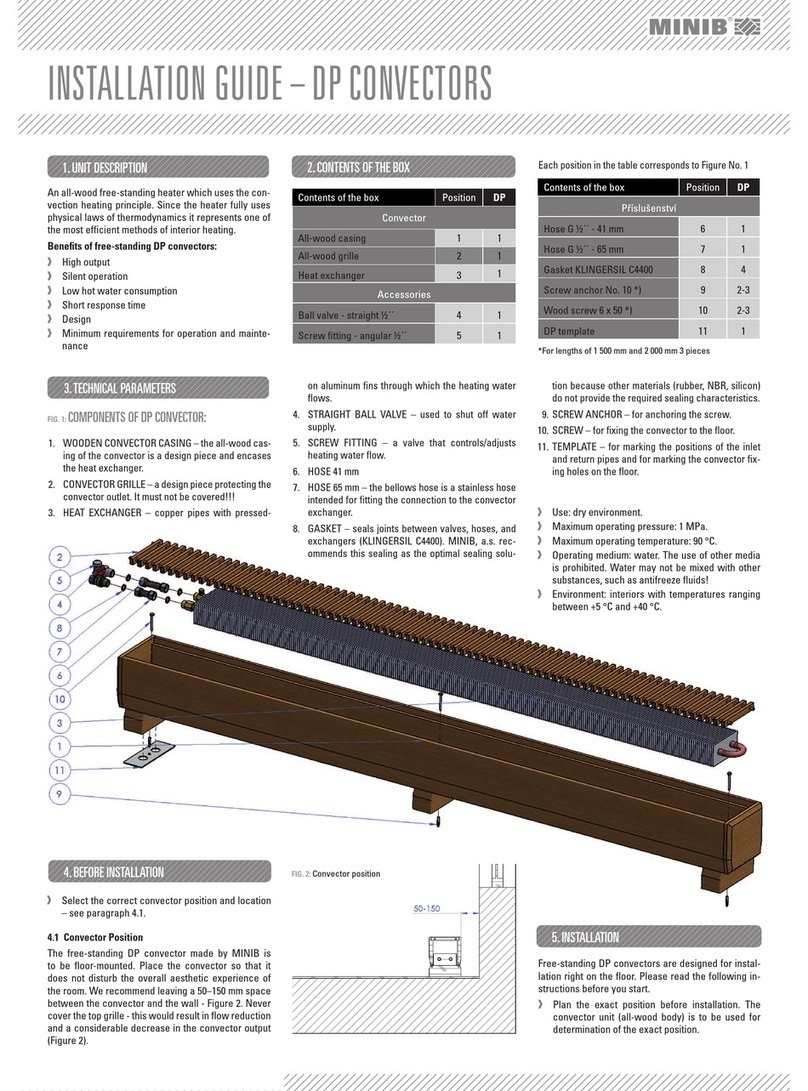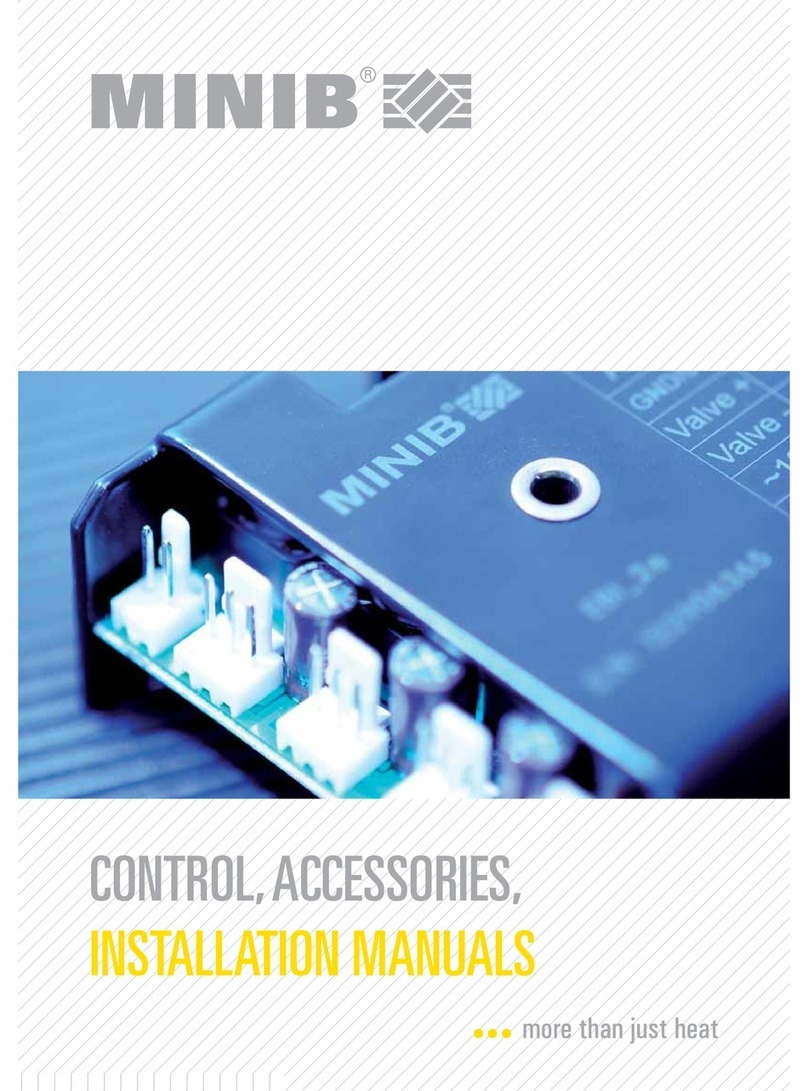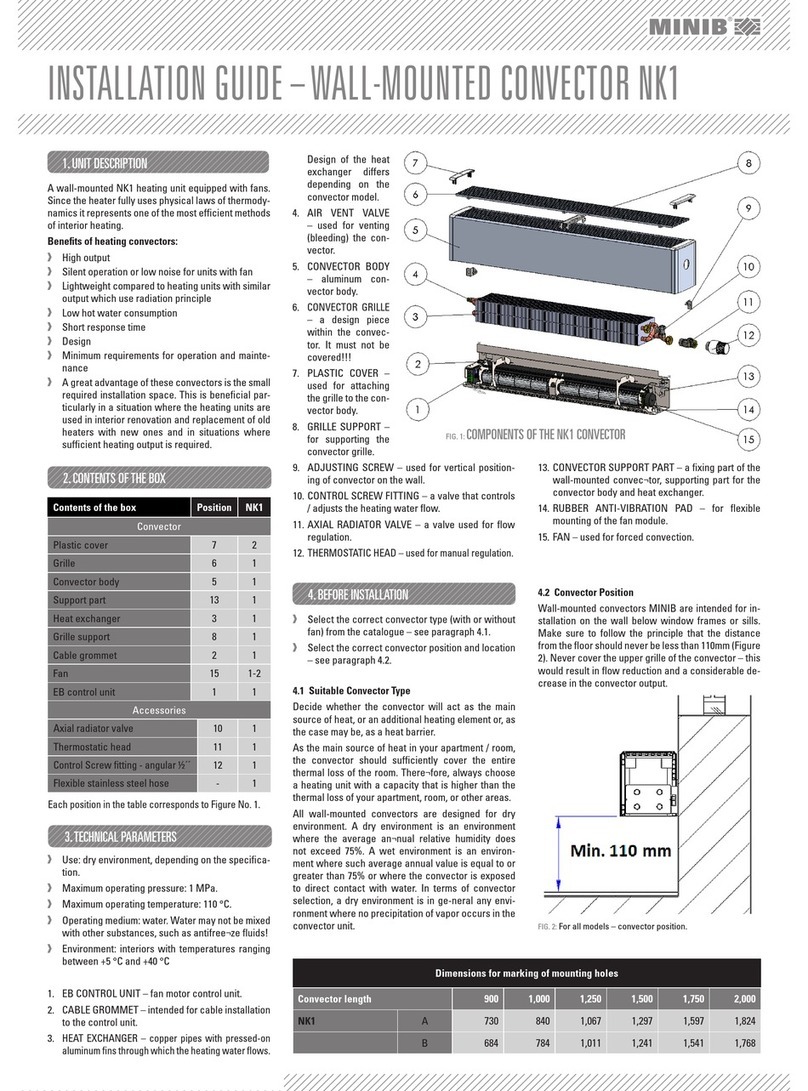INSTALLATION GUIDE
–
FREE-STANDING CONVECTORS
1. UNIT DESCRIPTION
A free-standing heater which uses the natural or forced
(with fan) convection heating principle. Since the heater
fully uses physical laws of thermodynamics it represents
one of the most efficient methods of interior heating.
Benefits of free-standing convectors::
High output
Silent operation when the fan is running (models
with fan)
Low hot water consumption
› Short response time
Design
Minimum requirements for operation and mainte-
nance
2. CONTENTS OF THE BOX
3. TECHNICAL PARAMETERS
Use: dry environment according to the specification.
Maximum operating pressure: 1 MPa.
Maximum operating temperature: 110 °C.
Operating medium: water. The use of other media
is prohibited. Water may not be mixed with other
substances, such as antifreeze fluids!
Environment: interiors with temperatures ranging
between +5 °C and +40 °C.
1. CONVECTOR GRILLE – a design piece on the con-
vector. It must not be covered!
2. OUTER BODY OF THE CONVECTOR – aluminum
convector body with plastic covers.
3. SCREW FITTING – a valve that controls/adjusts he-
ating water flow.
4. AXIAL RADIATOR VALVE – a valve used for flow
regulation.
5.
THERMOSTATIC HEAD – used for manual regulation.
6. CONNECTING SCREW FITTING – for connecting
valves; gasket (O-ring) is to be installed in it.
7. SUPPORTING FRAME OF THE CONVECTOR – sup-
porting element for heat exchanger and fan (mo-
dels with fan)
8. FAN – used for forced convection (model with fan).
9. CABLE GROMMET – intended for power supply ca-
ble for the control unit (models with fan).
10. EB CONTROL UNIT – fan motor control unit (mo-
dels with fan).
11. HEAT EXCHANGER – copper pipes with pressed-
-on aluminum fins through which the heating water
flows. The exchanger design depends on the con-
vector model.
12. AIR VENT VALVE – for venting (bleeding) the con-
vector heat exchanger.
Contents of the box SK1 SK2 SU1 SU2 SP 1/4 SP 2/4 SW 250 SW 420 SPO
Convector
Plastic cover 222222222
Grille 111111111
Convector body 111111111
Bearing element 111111111
Heat exchanger 111111111
Fan 1-2 1-2 - - - - - - -
EB control unit 11-------
Cable grommet 1 1 - - - - - - -
Accessories
Axial radiator valve 111111111
Thermostatic head 111111111
Control screw fitting 111111111
O-RING 18X2 NBR70 222222221
Valve connection template 111111111
4. BEFORE INSTALLATION
Select the correct convector type (with fan / wi-
thout fan) from the catalogue – see paragraph 4.1.
Select the correct convector position and location
– see paragraph 4.2.
4.1 Suitable Convector Type
Decide whether the convector will act as the main
source of heat, or an additional heating element or, if
applicable, a heat barrier.
As the main source of heat in your apartment / room,
the convector should sufficiently cover the entire ther-
mal loss of the room. Therefore always choose a hea-
ting unit with a capacity that is higher than the thermal
loss of your apartment, room, or other areas.
All convectors are designed for dry environment, i.e., an
environment where the average annual relative humidity
does not exceed 75 %. A wet environment is an environ-
ment where such average annual value is equal to or
greater than 75 % or where the convector is exposed to
direct contact with water. In terms of convector selection,
a dry environment is in general any environment where
no precipitation of vapor occurs in the convector unit.
4.2 Convector Position
The free-standing convector made by MINIB is to be
floor-mounted. Place the convector so that it does not
disturb the overall aesthetic experience of the room.
We recommend leaving a 50-150 mm space between
the convector and the wall – Figure 2. Never cover
the top grille – this would result in flow reduction and
a considerable decrease in the convector output.
FIG. 1: COMPONENTS OF THE FREE-STANDING CONVECTOR:
FIG. 2: Convector position (model with fan / without fan).
